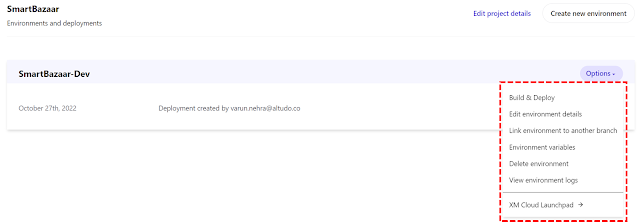Sitecore Multi-Lingual Implementation: Questions To Ask Your Potential Clients
Almost every life-size Sitecore implementation has a multi-lingual aspect to it. Asking the right questions separates the men from the boys, in other words, shows how mature your digital practice truly is.
Here are my top questions I commonly ask my potential clients before implementing a multi-lingual/multi-cultural implementation:
Question #1: What languages are to be enabled in Sitecore?
Let me know if you have other ideas or topics related to multi-lingual Sitecore implementations.
Here are my top questions I commonly ask my potential clients before implementing a multi-lingual/multi-cultural implementation:
Question #1: What languages are to be enabled in Sitecore?
Seems like an obvious one but there can be some nuances to consider here and our job is to dig into them.
A good reason to know all the languages you will need to support up front is that certain languages (German, Japanese etc.) can and do have an impact on your creative design and UX.
Speaking of nuances, if a client says they would like to enable Chinese, it's not enough to ask if they would like both Mandarin and Cantonese. I would further ask them if they are looking for traditional or simplified Chinese, and mind you they all have different language codes that you will need to enable.
Question #2: Do you require a language fallback strategy?
I think it's common knowledge that Sitecore now comes with built-in language fallback. In my opinion, it was built looking back at the Partial Language Fallback module created by the great Alex Shyba (awesome explanation by Elizabeth Spranzani) while solving some of the issues/challenges reported by the community. If you do not know what language fallback is, I suggest you better start here.
Again, besides the obvious question "Is the entire site multi-lingual or simply parts of it?", here are a few things I would ask:
- Identifying data templates that require version presence (as in data templates that cannot/must not fallback)
- Identifying if media items must fallback as well
- Identify Shared fields (contain value shared across all languages) in your data template
- I would ask about cascading fallback (e.g. en-UK falls back to en-US which falls back to en), as in if content does not exist in a language it can fallback all the way to the root language
Since you language translations can be region specific (Mexican Spanish being different than Spain's Spanish), inquiring regarding your client's need for regional content delivery is important. This also opens up the question regarding regional content delivery infrastructure but that's a topic for another blog post.
Question #4: What are your authorization needs for language variants?
There are basically two schools of thought when it comes to storing language variants in Sitecore:
- Single content tree: idea of a single website and content authoring workflow with support for language fallback
- Multiple content trees: segregation of translated content, duplication of content, usually achieved through item cloning
Asking your client regarding the authorization needs opens up the topic regarding their content governance and structure of their marketing team. If language variants are owned by regionally located marketing teams that may required varied authorization, #2 option of multiple content trees with item cloning may work best otherwise #1 is the most commonly occurring scenario. In either case, figuring out client's content governance model is vital to a successful workflow and security implementation in Sitecore.
Question #5: What is your URL structure for language variants?
There are several ways in which language variant URL can be structured:
- TLDs (Top level domains .au, .ca etc.)
- Sub Domains (es.domain.com, fr.domain.com etc.)
- Language Embedding (domain.com/en, domain.com/es etc.)
The easiest way to answer this question is to turn towards SEO. Here is everything you need to know regarding Multi-Lingual SEO. I recommend option #3 for obvious reasons.
Question #6: Who/What do you use for TMS (Translation Management System)?
Knowing the answer to this question will help you with requirements around implementing connectors such as ClayTablet for translation management. Knowing whether your client relies on machine translation vs manual (human) translation will help define the better content governance and workflows to manage the translation process itself. Recommend manual translation for obvious SEO benefits.
Besides asking these questions, I always provide my clients with tools/extensions that make content authoring easier such as ribbon buttons that create language versions for items, reset/sync presentation across language variants etc.
Let me know if you have other ideas or topics related to multi-lingual Sitecore implementations.


Comments
Post a Comment